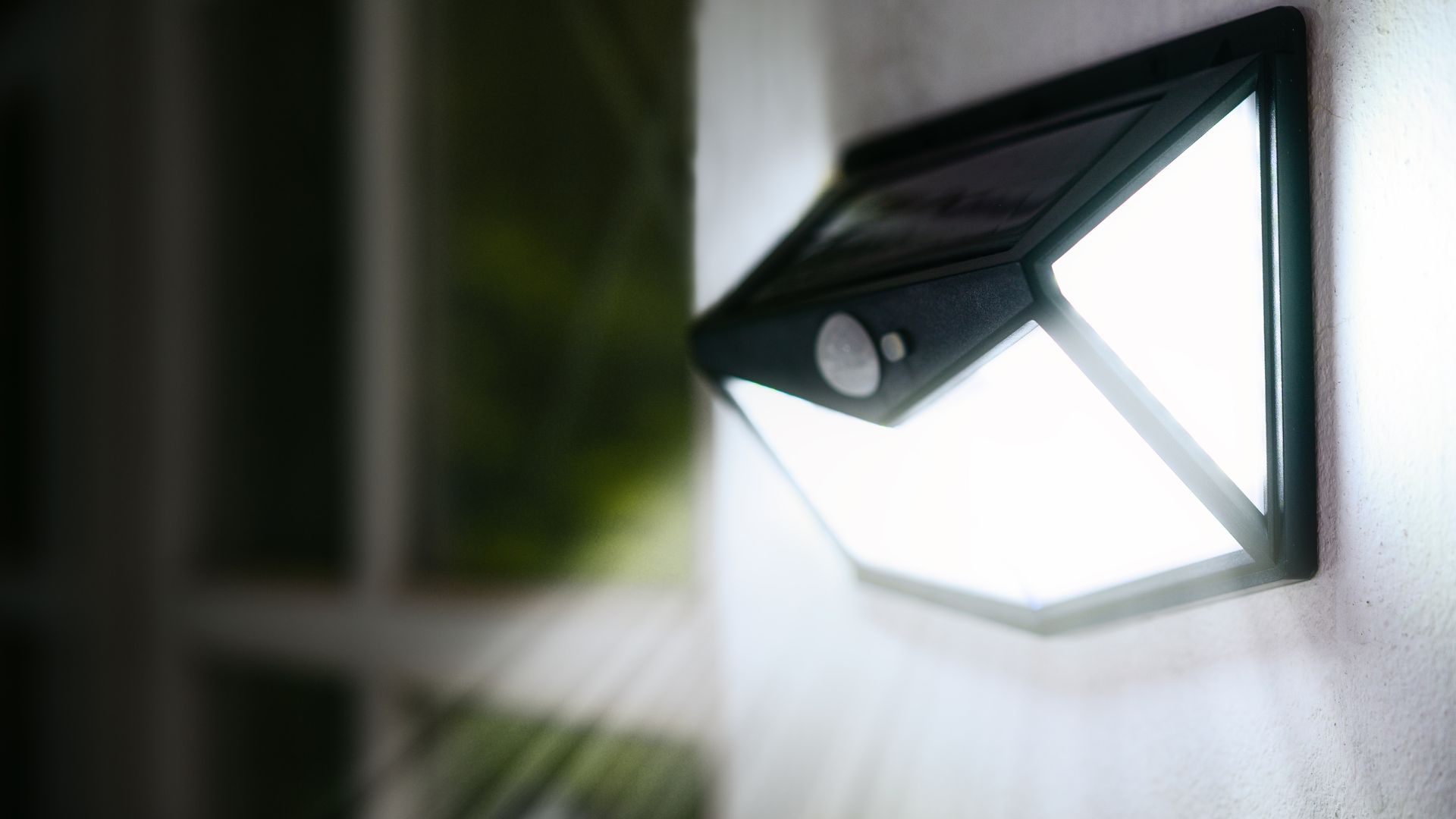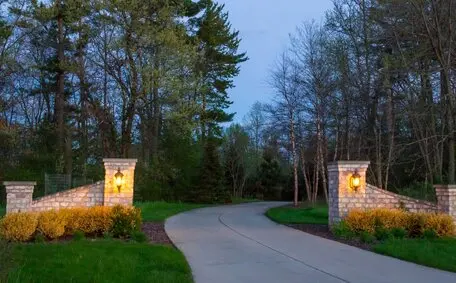Is your outdoor lighting doing enough to keep your property secure and energy efficient? More and more Aussies are switching to motion sensor lights for both residential and commercial use. These intelligent lighting solutions are known for their energy efficiency, convenience, and ability to detect movement in real-time. But not all sensor lights are created equal. With so many types and features available, finding the right fit can feel overwhelming.
This guide breaks it down simply so you can confidently choose a sensor light that matches your
What Are Sensor Lights?
Sensor lights are intelligent lighting solutions that automatically turn on when motion is detected or light conditions change. They use various types of sensor technology—like passive infrared (PIR), microwave sensors, timers, or dusk-to-dawn settings—to provide automatic illumination without needing to flick a light switch.
Most commonly used as outdoor motion sensor lights, they help detect movement and provide sudden illumination for both security and convenience. These lights work by sensing heat signatures, motion, or ambient light levels, depending on the model.
You’ll spot sensor lights installed around homes, offices, warehouses, and public pathways. Their versatility makes them ideal for illuminating dark areas, enhancing security, and offering hands-free functionality. From reducing electricity costs to boosting energy efficiency, sensor lights contribute significantly to energy savings while supporting modern security systems.
Exploring the Different Types of Sensor Lights
PIR (Passive Infrared) Sensor Lights
PIR sensors detect motion by picking up infrared radiation from heat sources like people or animals. These motion-activated lighting solutions are perfect for home entrances, side gates, and backyards—anywhere you want lights that spring to life when motion is detected.
Microwave Sensor Lights
Unlike passive infrared PIR, microwave sensors emit waves that can travel through glass and thin walls, making them ideal for commercial car parks, underground garages, and enclosed stairwells. Their wider detection range and sensitivity settings offer optimal performance, especially in tricky layouts.
Dual-Technology Sensor Lights
Combining PIR and microwave technologies, these sensor lights are smart features designed to minimise false triggers. Ideal for driveways near roads or shared residential entrances, they detect motion more accurately by requiring both heat and movement.
Dusk to Dawn Sensor Lights
These lights provide automatic illumination from sunset to sunrise without any manual input. Common in outdoor spaces, perimeter fences, and front yards, they offer energy-efficient outdoor lighting for all-night visibility.
Photocell Sensor Lights
Similar to dusk-to-dawn but more responsive to ambient light, photocell sensor lights are great for decorative lighting or illuminating dark areas in gardens and landscapes. They adjust light output based on environmental brightness.
Timer-Based Sensor Lights
These allow you to program light schedules—ideal for pathways, patios, or alfresco dining spots. The light stays on for set durations, helping you save energy and avoid overly bright spaces all night long.
How to Choose the Right Sensor Light for Your Space
Finding the right motion sensor light isn’t just about picking one off the shelf, it’s about making sure it fits your space and does exactly what you need it to.
Start with the Purpose
Think about why you need sensor lighting in the first place. Is it for deterring potential intruders? Improving visibility around the home after dark? Or are you upgrading from traditional lighting systems to something more intelligent and energy efficient? The reason behind your choice will guide the features you need most.
![Different Types Motion Lighting Types Motion Lighting]()
Consider the Layout
The size and shape of your property play a huge role. A wide backyard or open car park calls for a sensor with a broader detection range. On the flip side, a narrow side path or entryway needs something more focused. For outdoor motion sensor lights, make sure the unit is weather-rated for rain, wind, and temperature changes.
Pick the Right Power Source
Solar-powered lights are perfect for spots without easy access to wiring, while battery-operated lights are great for flexible installs. If you want something with long-term consistency, a hardwired light fixture is your best bet, especially for areas you use often.
Get the Sensitivity Right
Motion detection range and sensitivity settings matter. If the light picks up movement too easily, you’ll get false triggers from pets or passing cars. Too limited, and it might miss actual movement. Look for models that let you adjust these settings to suit each area.
![Sensor Light On Sensor Light]()
Key Benefits of Installing Sensor Lights
Sensor lights offer more than just security—they’re a practical upgrade for any property. For starters, they enhance visibility around dark areas, from garden paths to stairwells, making it safer to move around at night.
Installing motion sensor lights also means no more fumbling for a light switch. They provide hands-free convenience, which is especially handy when your arms are full or when guests arrive after dark.
From an energy efficiency standpoint, sensor lights save money by only turning on when motion is detected. Compared to traditional lighting systems that stay on unnecessarily, these lights dramatically reduce energy consumption and contribute to lower electricity costs.
Plus, sensor lights add value. More homebuyers are looking for smart, energy-efficient lighting solutions that offer both form and function. Security lights, especially modern sensor lights, make your home or business more attractive to potential buyers.
Finally, motion sensor lights are a discreet yet effective way to deter potential intruders, with sudden illumination surprising anyone who comes too close.
Where Should You Install Sensor Lights?
For residential properties, start with entrances—front and back doors are prime spots for outdoor motion sensor lights. Then look at driveways and walkways where good visibility is key. Installing motion sensor lights next to garages or carports adds another layer of security.
Backyards and entertaining areas benefit too, especially with solar-powered lights or timer-based models for gatherings that last into the night. Dark areas like staircases, narrow side paths, and alleyways are also ideal—these spots are often overlooked, but they’re high-risk zones for trips and falls.
For business premises, focus on shared access points, loading docks, and car parks. Outdoor sensor lights not only help staff and customers move safely but also keep security systems effective by lighting up when motion is detected.
Perimeter fencing on larger properties is another smart choice. This extends your motion detection range and helps monitor areas that are harder to see from the main building.
Strategic placement ensures your sensor lights offer optimal performance while blending into your overall outdoor lighting setup.
Mistakes to Avoid When Choosing or Installing Sensor Lighting
One common mistake is choosing the wrong sensor type for your space. For instance, using passive infrared in an area with glass or thin walls can reduce motion detection accuracy—microwave sensors would work better there.
Placement matters too. Installing lights too high can limit the detection range, while placing them too low might pick up unnecessary movement like pets or passing cars, causing frequent false triggers.
Ignoring sensor angle and sensitivity settings can also lead to ineffective performance or annoying activations. It’s important to adjust for the specific area you’re lighting.
Over-lighting a space with overly bright fixtures or the wrong light output can be a waste of energy and make outdoor spaces feel harsh or uninviting.
Lastly, while DIY is tempting, poor installation without following the manufacturer’s instructions can result in damage, poor results, or safety risks. Always approach installing motion sensor lights with proper tools—or better yet, hire a pro.
Why Hiring a Professional Makes All the Difference
Bringing in a licensed electrician isn’t just about saving time—it’s about ensuring safe, compliant installation that meets local standards. Professionals understand how to position your sensor lights for effective coverage and minimal false triggers.
They can assess your needs and recommend the right mix of pir sensors, microwave sensors, or even dual technology setups for the best results. They’ll also know how to integrate sensor lights into your existing systems or help with smart upgrades.
A pro can advise on power source options—like hardwiring vs. solar—and ensure all fittings are secure and weather-resistant, especially for outdoor lighting.
Plus, you get peace of mind. With expert help, you’re less likely to face faults or malfunctions down the line. Many electricians also offer ongoing support for maintenance, replacements, or expanding your home automation systems later on.
Lighting That Works When You Need It Most
Whether you’re aiming for enhanced security, a warm welcome after dark, or smarter energy use, sensor lights offer a tailored solution. By choosing the right motion sensor, adjusting the sensitivity settings, and matching your light fixture to your outdoor spaces, you get lighting that works exactly when (and where) you need it.
No more guesswork, wasted energy, or fiddly switches—just intelligent lighting solutions that adapt to your life. And if you’re unsure where to start, help’s just around the corner.
Not Sure Which Sensor Lighting Setup Is Right For Your Place?
That’s where Bright Force Electrical comes in. Our team’s here to make things simple, offering expert advice and professional installation services right across Sydney.
From motion sensor lights at your front door to outdoor lighting that makes your backyard more inviting (and secure), we handle it all. Need something more advanced, like ultrasonic sensors or smart features? We can help with that, too.
We’ll take the time to understand your space, recommend the best options, and install everything properly, so you get reliable lighting with just the right detection range and design to suit your home or business.
Get in touch today and find out how the right sensor lights can make your property safer, smarter, and a whole lot easier to navigate after dark.
Because good lighting isn’t just about brightness—it’s about feeling confident and comfortable, day or night.










